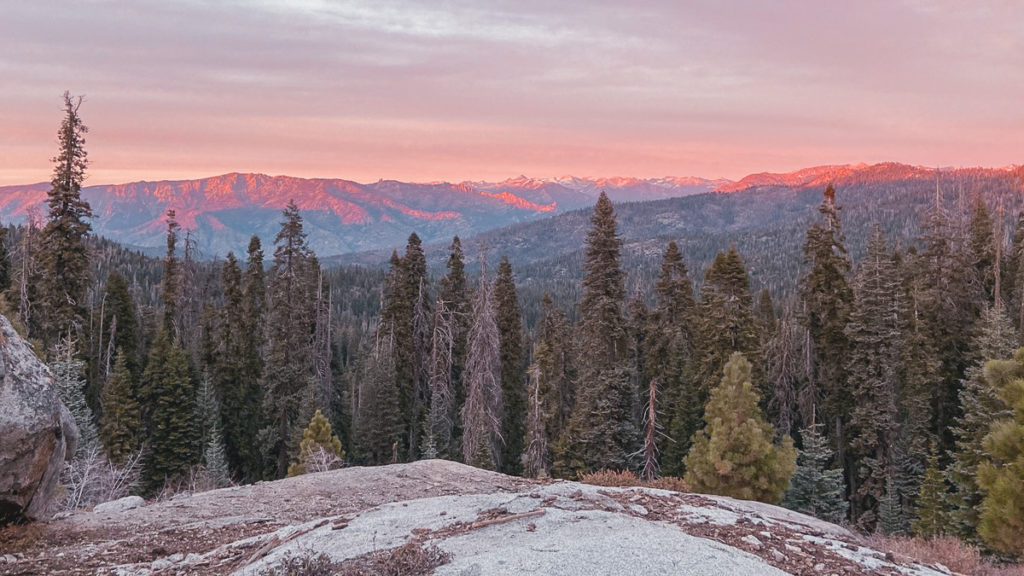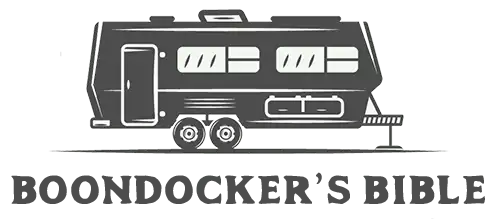These official Sequoia National Forest Camping Rules were gathered from Orders issued by the Supervisor of Sequoia National Forest, along with information published by the U.S. Forest Service, and from the U.S. Code of Federal Regulations…

Sequoia National Forest Camping Rules
Passes and Permits
Boondocking (dispersed camping) does not require the purchase of a pass or permit for most of Sequoia National Forest. The following are exceptions…
- Golden Trout Wilderness, one of six wilderness areas inside Sequoia NF, requires a permit for camping. The permit is free at any forest service office at wilderness entry points. (see, Wilderness Permits, Sequoia National Forest)
- Campfire permit is required by the California Department of Forestry and Fire Prevention (CalFire) statewide. The permit is free, and can be obtained by downloading it from CalFire’s website. (see, Burning Permits, CalFire)
- Certain trailheads, picnic areas, boat ramps, will require a Recreation Pass, issued at any national forest office. An Interagency Pass will suffice in these cases. These passes only cover day-use activities. (see, “Recreation Passes”, Sequoia National Forest).
- River Use Permits are required for any kind of boating on the Kern River. (see, River Use Permits, Sequoia National Forest).
- There are several developed campgrounds in Olympic National Forest that will require per-night fees. (See, Camping & Cabins, Sequoia National Forest).
Areas Off-Limits to Camping
Sequoia National Forest allows camping anywhere and everywhere inside of its boundaries. However, the forest may close certain areas from time to time depending upon the season, potential for damage, or to repair roads. Refer to the latest forest orders to find out which areas are currently closed. (See, “Forest Orders”, Sequoia National Forest).
Maximum Length of Stay
As of May 19, 2019, the maximum length of stay for camping inside Olympic National Forest is 14 days in any 30-day period, regardless of dispersed areas or developed areas. (See, “Forest Order 0513-19-09″, Occupancy and Use)…
- The 30-day period begins as soon as you set up camp.
- The 14 day limit applies to any part of Sequoia NF, even if you choose to pack up and move to another part of the forest.
- Once you exhaust the 14 day limit, you must pack up camp and leave Sequoia NF entirely. You can return to camping inside the forest after the 30-day period exhausts.
Campfire Restrictions
Campfires are generally allowed for nearly all of Sequoia NF, but because of California’s propensity for wildfires, burn bans are frequently issued. (see, Road, Fire, and Weather Conditions, Sequoia National Forest)
- Use of barbecues, gas grills, or other cooktops for outdoor use, also requires a campfire permit.
- Inside developed campgrounds, campfires are restricted to metal containers provided at each campsite, or your own metal containers, barbecue grill, or cooktop.
Gathering Firewood
You’re free to gather dead and down firewood to build a campfire while camping at Olympic National Forest. (See, Dispsersed Camping Information, Sequoia National Forest).
- You may not cut down standing trees, dead or alive.
- You cannot transport any wood for home use or for resale (a permit is required).
Camping Setbacks
When camping outside of developed campgrounds (see Dispersed Camping Information, Sequoia National Forest)…
- Your campsite must be 200 feet or more from a body of water (lake, pond, stream, river)
- Your campsite must be 1/4 mile or more from a developed campground or trailhead.
- Your campsite must be 1/4 mile or more from an archaeological or historical site.
- Your campsite must be 1/4 mile or more from a major highway.
Fireworks and Explosives
Lighting off fireworks and explosives is prohibited year-round at Sequoia National Forest.
Weapons
You can bring your guns into Sequoia National Forest for target shooting and self-defense. There are rules that apply, however. (see, Hunting, Sequoia National Forest)…
- Target shooting is prohibited in areas designated as Wilderness. Sequoia NF has six such areas. (see, Wilderness, Sequoia National Forest)
- Sequoia NF may issue temporary, target shooting bans, in certain areas. Check the latest forest orders for specifics. (see Forest Orders, Sequoia National Forest)
- You cannot shoot inside or within 150 yards of a residence, building, campsite, developed recreation site or occupied area.
- Do not use bottles, glass, or other targets that shatter into tiny pieces.
- You cannot shoot across, or on, roads or bodies of water, or where people or property are exposed to injury or damage.
- You cannot shoot into a cave.
- You cannot shoot into areas that cause resource damage. Don’t shoot trees, rocks, stumps, or non-game animals.
- Firing tracer bullets or incendiary ammunition is prohibited. (see, CFR Title 36, Chapter II, § 261.5 Fire)
Vehicle Rules
Vehicles are required to remain on designated routes identified on Sequoia National Forest’s “Motor Vehicle Use Maps”.
- Off-road driving is allowed only in areas designated for OHV use. Sequoia NF has several OHV areas. (see OHV Riding & Camping, Sequoia National Forest)
- Vehicles may be driven off of roads for the purpose of reaching a camping location or moving a vehicle clear of traffic, as long as they driven on previous-used, well-impacted soil, and does not damage plants or animal habitats.
- You cannot build your own roads, nor clear out plants and trees to get your vehicle into some place. (see, CFR Title 36, Chapter II, § 261.10 Occupancy and use)
- Vehicles (including bicycles) are prohibited within any areas designated as “Wilderness”. (see, Wilderness, Sequoia National Forest).
Motor Vehicle Use Maps
These are the Forest’s official road maps. They indicate which roads are open to street-legal vehicles only, and which are open to both street-legal and non-street legal vehicles. For further discussion on this read, “How to Use Motor Vehicle Maps (MVUM) to Find Free Camping“.
- Sequoia NF, Hume Lake Ranger District, 2008 (PDF)
- Sequoia NF, Kern River North Ranger District, 2010 (PDF)
- Sequoia NF, Kern River North Ranger District, Wilderness Inset, 2010 (PDF)
- Sequoia NF, Kern River South Ranger District, 2010 (PDF)
- Sequoia NF, Kern River South Ranger District, Lake Isabella Inset, 2010 (PDF)
- Sequoia NF, Western Divide Ranger District, 2008 (PDF)
Nude Camping
Sequoia National Forest does not address the subject of public nudity in addition to regulations concerning “Disorderly Conduct” (see below).
However, state laws still apply to U.S. Forest Service lands…
- California Penal Code 314 (CA Penal Code § 314) – makes public nudity a misdemeanor if the nude person knows there are other persons nearby who might be offended. (see, CA Penal Code § 314, California State Legislation)
Disorderly Conduct
The following are acts prohibited (see, CFR Title 36, Chapter II, § 261.4 Disorderly conduct)…
- Inciting others into violence,
- Fighting, and
- Causing public inconvenience, annoyance, or creating alarm by making unreasonably loud noises.
Flying Drones
Drones (unmanned aircraft systems UAS) are allowed inside Sequoia National Forest. The Forest does not have any additional rules aside from the national rules adopted by the U.S. Forest Service. Below is a summary of the national rules (see Know Where to Fly, U.S. Forest Service)…
- Drones cannot fly above 400 feet, and must remain clear of obstacles.
- Drones cannot take off from, land inside, nor fly over areas designated as “wilderness”. Olympic National Forest has five such areas (see, Wilderness, Sequoia National Forest).
- Drones cannot be flown in areas where the FAA has established temporary flight restrictions. (see Temporary Flight Restrictions, Federal Aviation Administration)
- Drones cannot be flown over or near wildlife.
Pets
Pets are allowed inside Sequoia National Forest, with certain restrictions.
- Outside of developed areas (campgrounds, trails, trailheads), pets do not have to be leashed or confined, however they must be under your control at all times.
- Inside developed areas, pets have to be both leashed or confined, and under your control at all times.
- Inside areas designated as Wilderness, pets must be leashed at all times.
Sanitation Rules
The following are prohibited (Reference, CFR Title 36, Chapter II, § 261.11 Sanitation)…
- Possessing or leaving behind, trash, litter, debris in an exposed, unsanitary condition,
- Dumping sewage or waste water (gray water) on the ground, and
- Bringing in trash from home to dump into a forest trash container.
Pooping into a hole is still permitted. Sequoia National Forest requires you to dig at least six inches deep, and at least 200 feet from a body of water. (see “Dispersed Camping Information”, Sequoia National Forest).
Additional Information
- Sequoia National Forest Official Website, U.S. Forest Service
- All National Forest Articles, Boondocker’s Bible Knowledgebase
- All Articles About Camping in California, Boondocker’s Bible Knowledgebase
Phone Numbers
- Sequoia National Forest, Main Office – (559) 920-1588
- Hume Lake Ranger District – (559) 791-5758
- Kern River Ranger District – (760) 549-9533
- Western Divide Ranger District – (559) 920-0460

